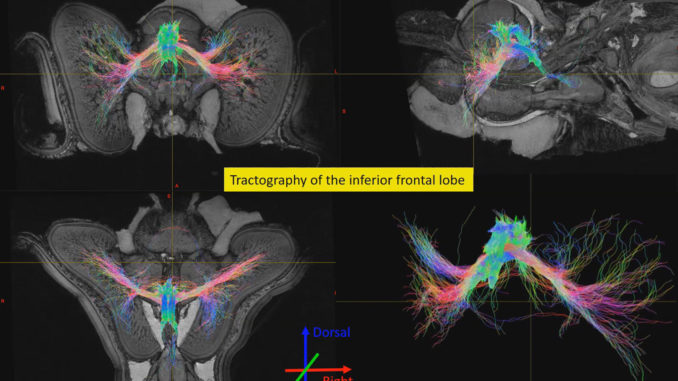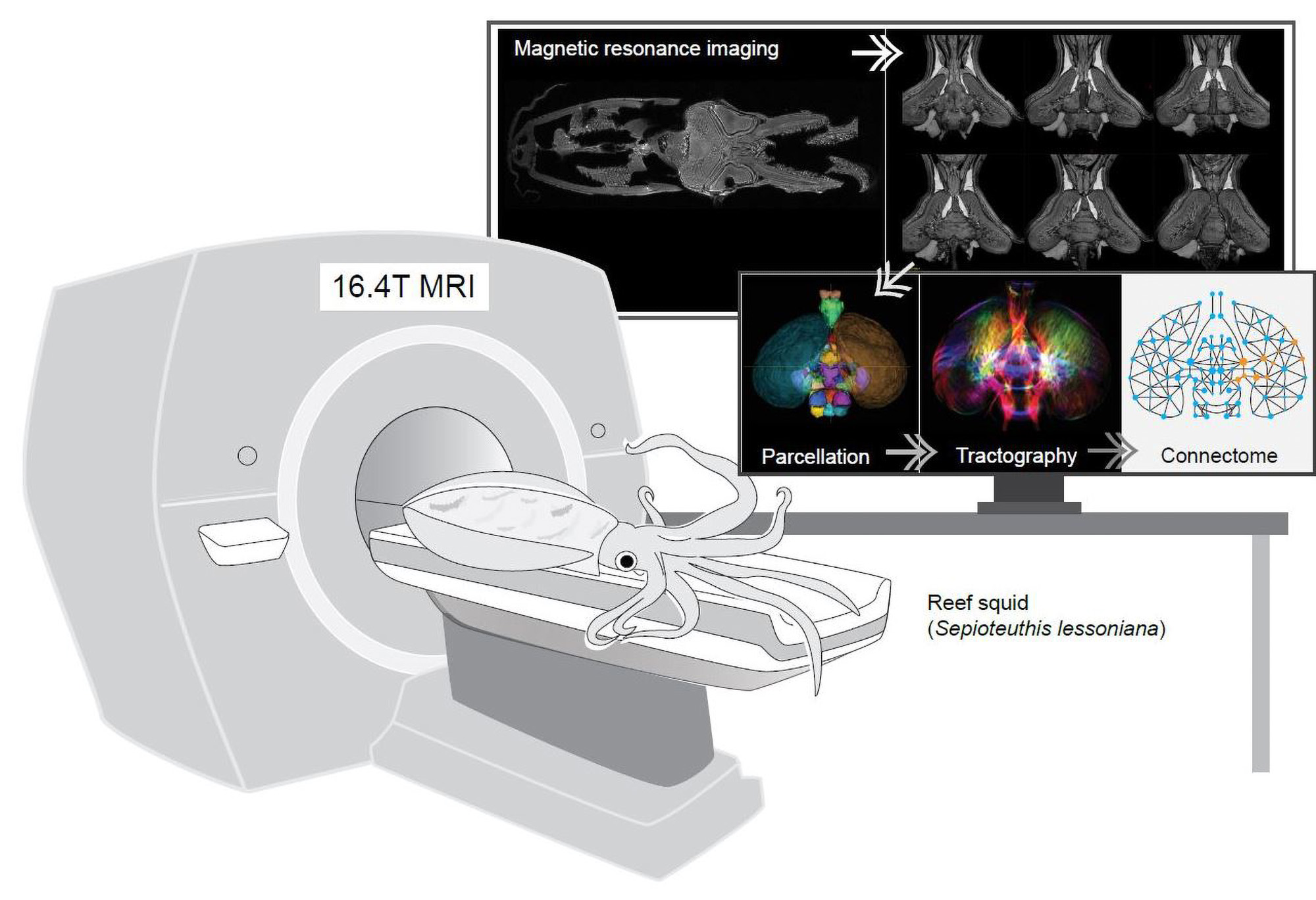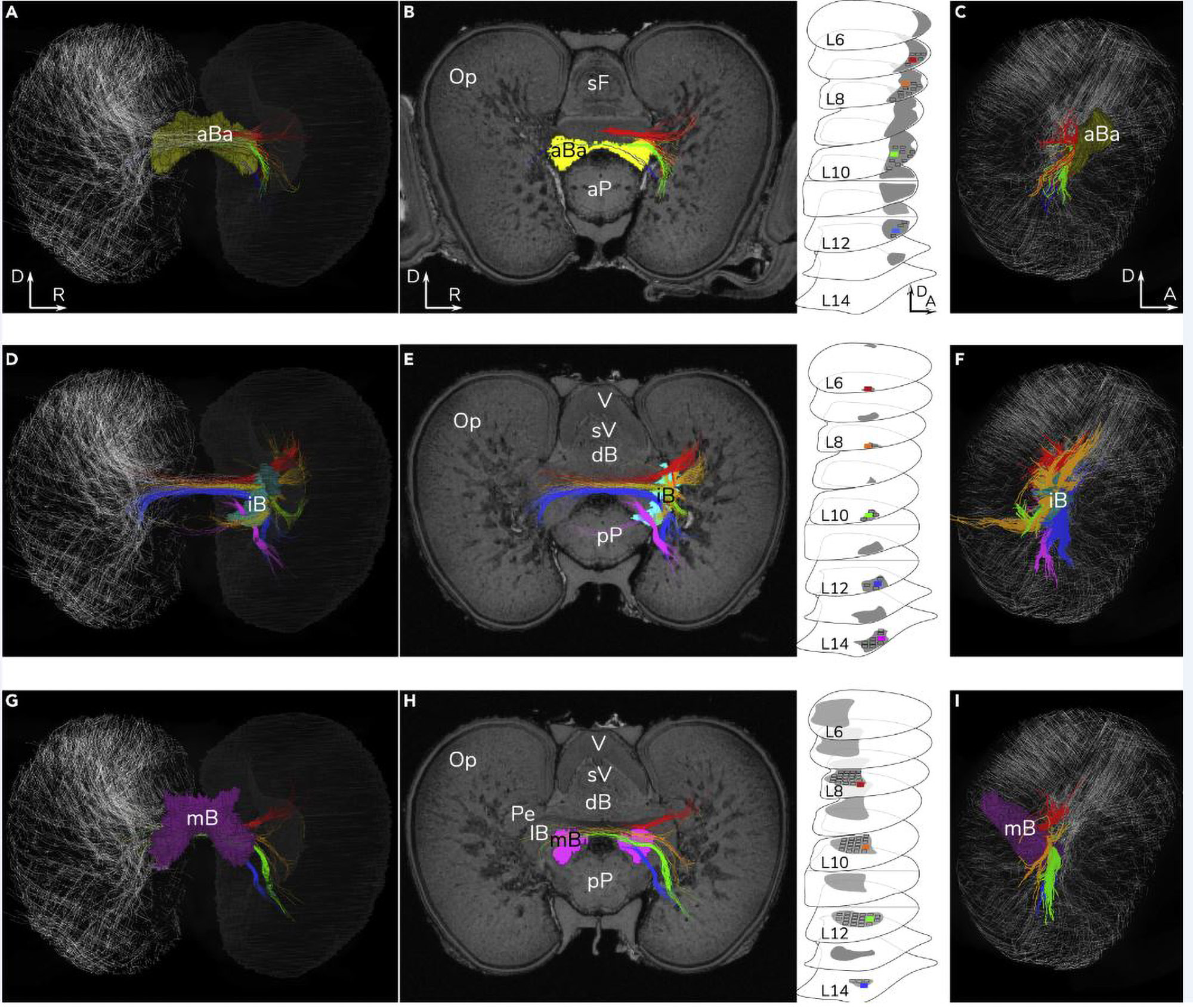
Scientists have mapped a squid brain for the first time using an MRI in a study that could reveal how these cephalopods are able to camouflage themselves.
Research conducted over the last four years to create the first-ever “map” of the squid brain could have far-reaching consequences for technologies ranging from computer vision and soft robotics to disaster relief and “swarm robotics,” he study of how to design groups of robots that operate without centralized control.
Dr. Wen-Sung Chung, a postdoctoral research fellow at the Queensland Brain Institute at the University of Queensland, Australia, and Justin Marshall, a professorial research fellow at the institute, completed the first detailed MRI scan of a squid’s brain to create a map of its neural connections. The results of their four years of research was published in January.

“Uncovering how the cephalopod brain works is essential if we want to understand how these creatures are able to adopt so many unique life strategies and how these could be explored for bio-inspired technologies (such as computer vision and soft robotics),” Chung said.
Part of the impetus for Chung, he said, is to do away with pop culture claims of “alien intelligence” sometimes propagated by headlines such as “Are octopuses aliens from outer space that were brought to Earth by meteors?”
Both squid and octopuses are cephalopods and invertebrates and both have eight arms. Unlike other mollusks, neither has a shell, and both are little understood.
Chung, whose focus has been on squid brains, said the scientific secrets locked away inside these unique creatures that are “masters of camouflage” have only just begun to be explored, and the lack of knowledge has led to misunderstandings.
He spent more than four years building an MRI machine that is five times more powerful than those used in hospitals so that he could map octopus brains.
With the scan, the researchers found 145 new neural connections and pathways, 60% of which are tied into the animal’s vision and motor functions, which in turn are believed to control movement and camouflage.

Some cephalopods have more than 500 million neurons, he said. In comparison, rats have 200 million and regular mollusks have about 20,000. He said the number of neurons in octopuses are similar to those in dogs. Humans have about 86 billion neurons in their brains.
“The neuronal number does not necessarily equate to intelligence, but the apparent behavioral complexity of the octopus has fired recent debate and interest,” he said.
“Advanced molecular tools and imaging techniques have been largely developed for vertebrate animals, and we basically adapted the ideas and techniques from ‘mouse brain research’ with lots of modifications to make the first high-res squid brain imaging work,” Chung said. “This took me about four years from scratch to … the first mesoscale cephalopod brain map.
“Frankly, it feels like we finally have an early stage of ‘Google Maps,’ and this cephalopod brain map allows us to navigate the complex brain lobes of these soft-bodied creatures with solid background knowledge.
“Our study provides the first modern neuroscience foundation to map the cephalopod brain in far greater detail than previously achieved,” he said. “This ‘circuit diagram’ of the cephalopod brain is a basis to predict potential function and leads to a better understanding of the complex visually-guided behaviors that we see and possibly over-interpret.
“Along with this neural circuit map, many of the hypotheses about cephalopods’ visual capabilities can be further tested (such as the neural circuit for the counter-shading camouflage we proposed in our squid paper, as well as existence of the ‘somatosensory arrangement’ [a part of the sensory nervous system] in the cephalopod brain).
“This group of visual predators seems to only rely on polarization vision (the ability of animals to detect oscillation of the electric field vector of light and use it for behavioral responses). How they became the master of color-blind camouflage or how they coordinate so many neurons/reactions in such a short time remains largely unknown,” he said.
Chung has a “long track record” in cephalopod biology, as a taxonomist, visual neuroscientist and as a deep sea biologist.”
He was the first person to film a live giant squid in its natural habitat at a depth of 2,000 to 2,600 feet (600 to 800 meters) in Japan.
“My Ph.D. focused on the visual system of cephalopods, including Australian coastal and deep-sea species from different regions of the Pacific Ocean,” he said, noting that it allowed him to develop many skills and techniques.
“Since my Ph.D.,” he said, “I have pioneered new protocols in magnetic resonance imaging (high-res 16.4T MRI, not the medical 3T MRI for humans) for cephalopods and fish, particularly aiming to investigate non-invasively those rarely-caught deep-sea specimens (such as vampire squid and several tubular-eye deep-sea fish species).

“This has deepened our understanding of morphological and functional adaptations of the visual system in the marine environment and shown ecological links to ambient light and behavioral tasks.”
The fascination with marine creatures is something he explains this way: “Cephalopods like giant squid and octopuses capture the imagination. They can apparently solve complex tasks, are masters of camouflage, express emotion, drag ships to the depths, predict football results, and their cognitive ability is said to approach that of a mammal.
“But do they? Which of these abilities are real?”
(Edited by Judy Isacoff.)
The post Squid brain could boost new technologies appeared first on Zenger News.


